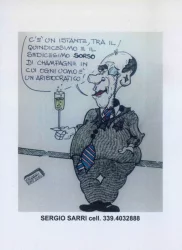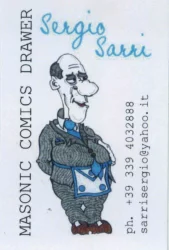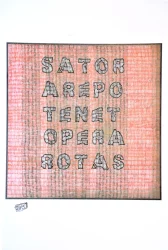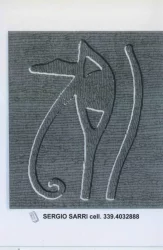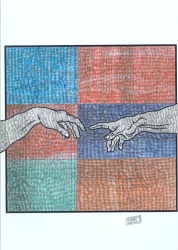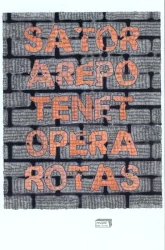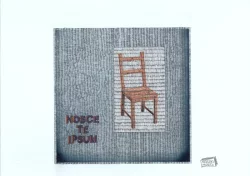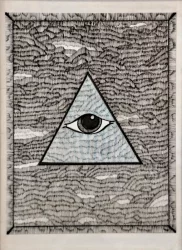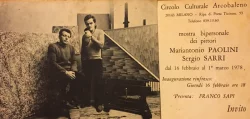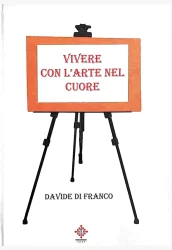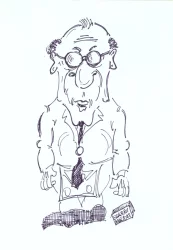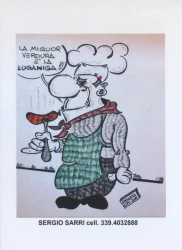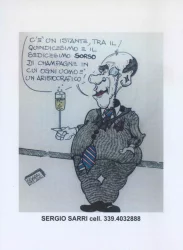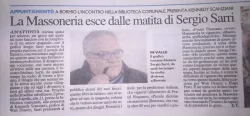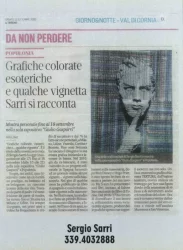Interpretation of the artist
The art of Sergio Sarri evolves in the mark left by a nib that, dipped in ink, moves in an intriguing and sinuous way, drawing with a decisive and natural stroke, almost to caress that white cardboard, complex characters, rich in character and landscapes created with a technique that defines itself as Texiture, giving the viewer the impression of drawings on fabric.
Reality becomes a starting point, for the artist, from which to draw shapes and colors which are then assembled on an imaginary palette that creates paintings with a harmonious line in which the attention to detail and meticulous aesthetic research can be read.
Florentine by birth, Sergio Sarri spends his childhood in one of the most refined cities in Italy from an artistic point of view and art has brought her into the heart of him, his faithful life partner. In Milan and later in Udine, Sergio spends his free time attending cultural circles, participating in collective exhibitions and organizing personal exhibitions.
It is in Udine that Sergio, still a student, attended the studio of Mirko Basaldella, to whom the project and construction of the Fosse Ardeatine gate belongs. The 1980s saw him engaged in both conceptual and figurative art, and it was in those years that he collaborated with a Milanese magazine, Varese Press Quotidiano d'Italia, which commissioned him a series of comics.
The explosion of ink on paper, and the request for a Masonic magazine that charges him with a series of comics, creates Fratel Pisquano, a famous character of Sergio Sarri, a caricature of a forced human being who makes us smile and who will give life to a series of absurd, sarcastic, loser characters who live in a dimension that takes its cue from reality and then moves away from it. The professionalism in the decisive and sure line, in the outlines and in the details, can be read both in the acrylics and in the use of Indian ink.
In the cartoons by Sergio Sarri born to describe an epochal time where the dialogues are reflected as in a mirror and the stereotypical characters of a society that does not work and that leaves nothing to the imagination and dreams, the artist's attention to detail replaces the thoughts and words. Witty, with a keen sense of humor, Sergio has been working for a long time now by manipulating our vices and our weaknesses, creating prototypes that make you smile and without any morals.
Sergio Sarri currently lives on the Etruscan Coast, near the sea, drawing and painting on the island that he never does, works at night and his graphic studies are much appreciated and requested; in conceptual art he prefers esoteric subjects that allow him to exhibit elegant and harmonious forms.
Some Thoughts on Conceptual Art
In one phase of his studies, the artist confronts himself with conceptual art. They don't have to buy it to have it. They can have it just knowing it. (Laurence Weiner).
Conceptual Art appears in Europe around the 1960s and is opposed to the art forms known until then, based on the quality of the work and its ability to arouse emotions. In Conceptual Art what counts is the idea and not the realization of the work. The precursor artists of conceptual art are found in the French current DADA interpreted by Marcel Duchamp, Man Ray and Francis Picabis already present in the 1950s, which bring thought and concept to the fore with respect to the visual and emotional impact of the work of 'art.
The first artist to have defined his conceptual program was the American Joseph Kosuth with the work "ONE and THREE CHAIRS" (One and Three Chairs ". The authors of this current have changed the conception of the artistic act by shifting the attention from the execution to the ideation. in practice the materiality of the object loses importance compared to the power of the idea. "The marble crumbles, the paintings fade but the ideas can last forever."
